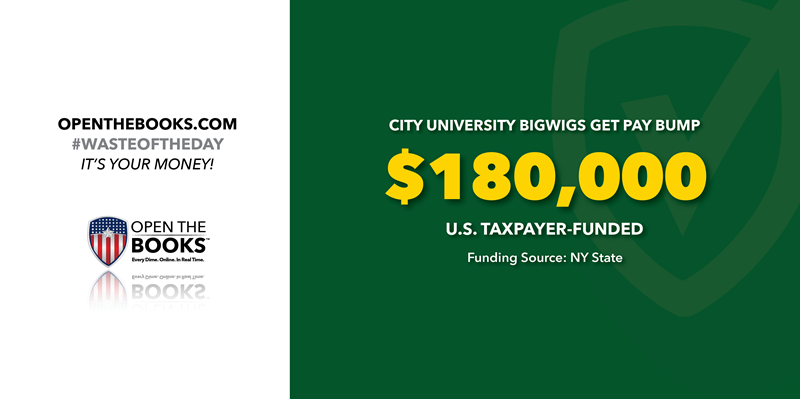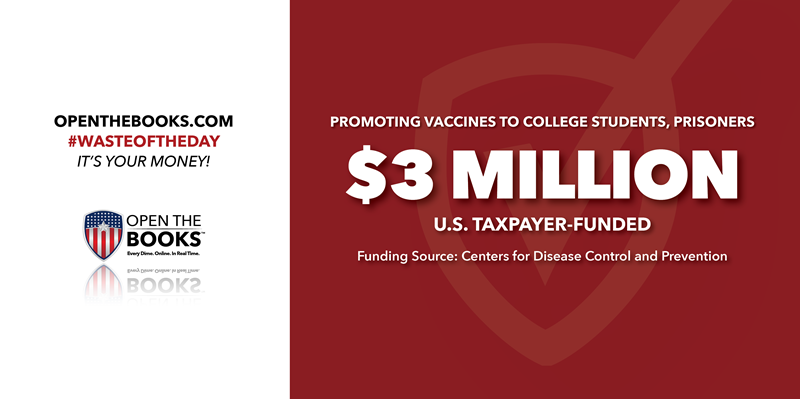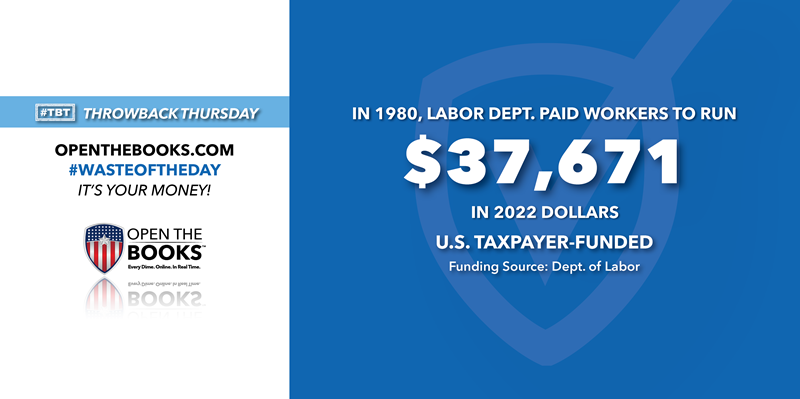
Baltimore Schools Head Collects $444,775 While Student Test Scores Suffer
November 28, 2022

While students in Baltimore’s public schools are suffering with some of the lowest test scores in the country, the head of the school district collected $444,775 in pay and other compensation during her contract year that ended on June 30, 2022.
Dr. Sonja Santelises, the school district’s CEO, earned a base salary of $333,125, the highest in the state among 24 public school districts, Fox45’s Project Baltimore, Chris Papst reported.
But she also received added compensation, including a $9,600 car allowance and $53,300 in “deferred compensation” toward retirement.
She also gets 59 paid days off a year — 38 vacation days, 18 sick days and three personal days. The almost 12 weeks of taxpayer-funded paid time off doesn’t include the 13 paid holidays throughout the year.
If Santelises doesn’t take her 12 weeks off, her contract allows her to be paid for most of the unused time.
During her last contract year, she was paid in cash $48,750 in unused paid leave. When that’s added to the rest of her compensation, Santelises collected a total of $444,775.
“It’s milking taxpayers like dairy cows,” OpenTheBooks.com CEO and founder Adam Andrzejewski told Project Baltimore. “We put a premium on those leaders, locally, that say they're going to educate our children. And so, we need to hold, at the end of the day, we need to hold them accountable.”
While her contract says she will be held accountable — the school board will evaluate the CEO, in part, on how she “demonstrated improvement in the academic performance of students in the City Schools” — graduation rates, attendance and college enrollment are lower than when the Santelises began overseeing the schools in 2016.
Santa Comes Early with CUNY Exec Raises as Enrollment Drops
November 29, 2022

Two top City University of New York administrators each received $90,000 raises this year – as enrollment dropped.
Hector Batista, the public university system’s chief operating officer, saw his salary climb 27 percent from $330,000 to $420,000, and Derek Davis, the senior vice counsel and general counsel, saw a 30 percent gain from $300,000 to $390,000, according to The New York Post.
Batista also gets a car — driven by university police officers.
Two other executives, vice chancellors Doriane Gloria and Maria Junco Galletti, collected 15 percent pay raises. All the raises were retroactive to Dec. 31, 2021, approved by the CUNY Board of Trustees, The Post reported.
The hefty pay increases come as the university system saw a 10 percent drop in enrollments, from 271,000 in 2019 to 243,000 in 2021.
A CUNY spokesman told The Post that the school’s executive compensation plan needs to insure that “senior staff’s earnings are on par with other public higher education institutions locally and nationally.”
The spokesman acknowledged the raises come as enrollment has dropped.
"We are in a challenging job market and CUNY recognizes that it must remain competitive in order to recruit and retain talented leaders particularly as we work to boost pandemic-related enrollment drops and get New Yorkers the help they need to return to college."
Not everyone is happy with the raises. Adjunct professors, who teach many of CUNY’s classes, have made no secret that they are underpaid.
Penny Lewis, secretary of the faculty union, told The Post, “If the CUNY Board of Trustees believes management deserves raises this big, then surely our underpaid full-time faculty and staff, and our adjunct faculty who often struggle to afford even basic living expenses in NYC, deserve a substantial raise in the next contract.”
Gov. Kathy Hochul increased CUNY’s budget by $1.2 billion for FY 2023, to hire more full-time faculty, improve academic programs and services, cover capital projects, pay for operating costs, expand childcare services on campuses, and includes $110 million to increase fringe benefits for staff.
CDC Giving $3M to Study How to Vaccinate College Students, Prisoners
November 30, 2022

Since the American public hasn’t been hit over the head enough with messaging about how important it is to get vaccinated against influenza and Covid-19, the Centers for Disease Control and Prevention is giving $3 million to whichever organization comes up with ways to get more college students and people in prison to get vaccinated.
The CDC is giving $1.5 million to local or state governments, nonprofits, school districts or others who will research ways to get more college students to get vaccinated.
The researchers will assess what college students know about and how they feel about flu and Covid vaccines and their mandates. The winners of the grants will also identify barriers to getting vaccinated — the vaccines are free and available in many places, including most drug stores.
They will then design and implement ways to get undergraduate students vaccinated.
There are more than 1,000 colleges across the country that require on-campus students to be vaccinated against Covid-19. Some colleges have kicked out students who refused to get the vaccine, including the University of Virginia, which removed 238 students in 2021.
Another $1.5 million will be spent to vaccinate incarcerated people, a group that the CDC says are under vaccinated. The goal is to determine why these prisoners aren’t vaccinated at high rates and “improve immunization delivery.”
In May 2021, about half of the U.S. prison population was reported as having received the Covid-19 vaccine. This was attributed to states not prioritizing vaccinating prisoners. Prisoners also say they don't trust the vaccine.
The CDC can save its $1.5 million, we know why the prison population have a low vaccine rate.
Throwback Thursday: In 1980, Labor Dept. Pays Athletes to Run in Job Program
December 1, 2022

Throwback Thursday!
In 1980, the Department of Labor paid college-aged runners $10,416 — $37,671 in 2022 dollars — through a youth employment program to run, leading to the department winning a Golden Fleece award.
Sen. William Proxmire, a Democrat from Wisconsin, gave awards to wasteful and nonsensical spending, eventually handing out 168 Golden Fleece Awards between 1975 and 1988.
The Labor Department ran a summer youth employment program in Tucson, Arizona, which was supposed to give work to poor, unemployed youth.
In this case, 14 junior college track athletes were paid for twice-daily training sessions, weekly trips to compete in races, and weeklong trips to meet with, train with, and compete with other runners in Flagstaff, Arizona and Reno, Nevada, according to Proxmire’s office.
Their track coach, who was the job supervisor, tried to justify paying athletes to be athletes, arguing they worked hard in their running.
“I arbitrarily decided to pay them eight hours a day because of the hard work involved with running workouts twice a day,” Proxmire’s office quoted him as saying to the Arizona Daily Star. “I gave them free time whenever I could to explore. You now, it’s a real eye opener to go to a city like Reno with all those lights and everything.”
The athletes were paid $$744 for eight weeks of “work,” costing $10,416.
“It appears that a number of the junior college athletes may not have come from poor families,” Proxmire said then.
The program stated that athletes were to landscape and provide other maintenance to school facilities, never listing the running or Reno trip, which the senator called a misuse of federal funds.
USDA Gives $12.5M to Companies That Buy Federal Wood Byproducts
December 2, 2022

In an equation with fuzzy math, the U.S. Department of Agriculture is giving $12.5 million to companies willing to buy and then re-sell wood byproducts from federal land.
The USDA Forest Service will provided the funds “to facilities that purchase and process byproducts from ecosystem restoration projects in areas at risk of unnaturally severe wildfire or insect or disease infestation” through funding from The Infrastructure Investment and Jobs Act, according to the grant summary.
“These byproducts could include trees and woody biomass harvested through timber sales, thinning, hazardous fuels reduction treatments, or other restoration management activities.”
The goal is to lower the cost of restoration projects that need vegetation removal on federal and tribal lands and invest in surrounding communities. Grant recipients can collect between $50,000 and $1 million.
The numbers don’t appear to add up. The federal government is giving money to companies that buy its wood products to then sell the wood products.
“Funding priority will be to provide financial assistance to an entity seeking to establish, reopen, retrofit, expand, or improve a sawmill or other wood-processing facility that will utilize the byproducts from projects on federal land, tribal forestland, and tribal rangeland that have been identified as at risk for fire, insect, or disease and a high priority for ecological restoration,” the grant description states.
Companies that apply must have facilities close to federal lands and get the raw materials from those lands. Their applications must show how the federal funding will help use the byproducts and how this assistance will help reduce restoration costs.
The #WasteOfTheDay is presented by the forensic auditors at OpenTheBooks.com.